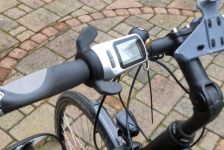The change you made to the levels is not good, you don't have to add another level, it is already foreseen in the code..
The fifth level, if present on the display, is between OFF and ECO (1 of 4), it is the lowest level of the 5, therefore:
#define POWER_ASSIST_LEVEL_1 60 will be level 2 on the display
#define POWER_ASSIST_LEVEL_2 120 will be level 3 on the display
#define POWER_ASSIST_LEVEL_3 200 will be level 4 on the display
#define POWER_ASSIST_LEVEL_4 300 will be level 5 on the display
This applies to all types of assistance.
ASSIST_PEDAL_LEVEL01_PERCENT 70, means that the new level (1 of 5), is 70% of level 2 of 5.
By setting it to 100%, Level 1 will be the same as Level 2.
So if you write "There is no difference between assistance levels 1 and 2", and you want to increase the difference between the two, you need to decrease the % value, try setting:
#define ASSIST_PEDAL_LEVEL01_PERCENT 50.
Do not add or change anything else to the main.h file.
In the config.h file, do not add any other definitions, just change the values.
For the voltage of the notches set these:
#define LI_ION_CELL_VOLTS_5_OF_6 3.90
#define LI_ION_CELL_VOLTS_4_OF_6 3.90
#define LI_ION_CELL_VOLTS_3_OF_6 3.70
#define LI_ION_CELL_VOLTS_2_OF_6 3.50
#define LI_ION_CELL_VOLTS_1_OF_6 3.30
Obviously the ebike_app.c file should not be modified.



